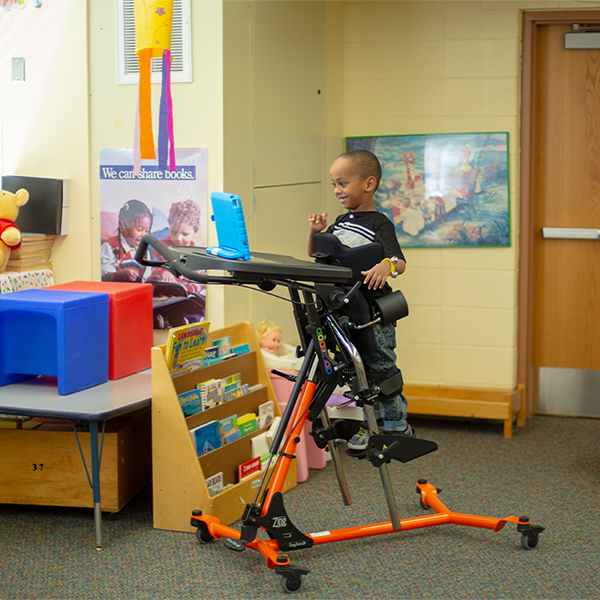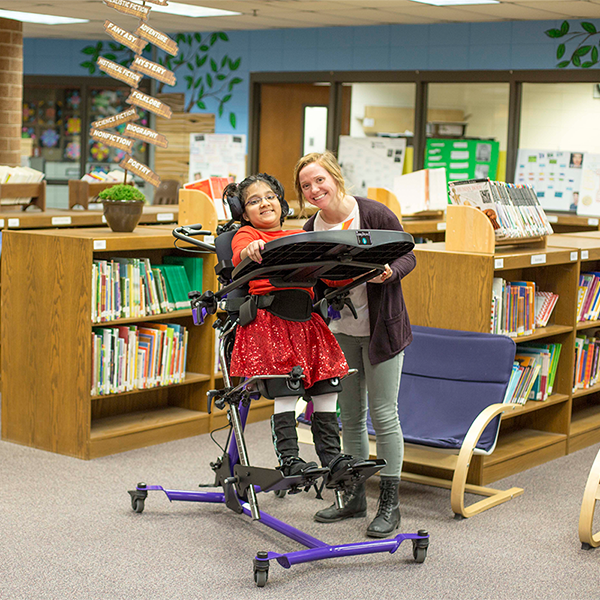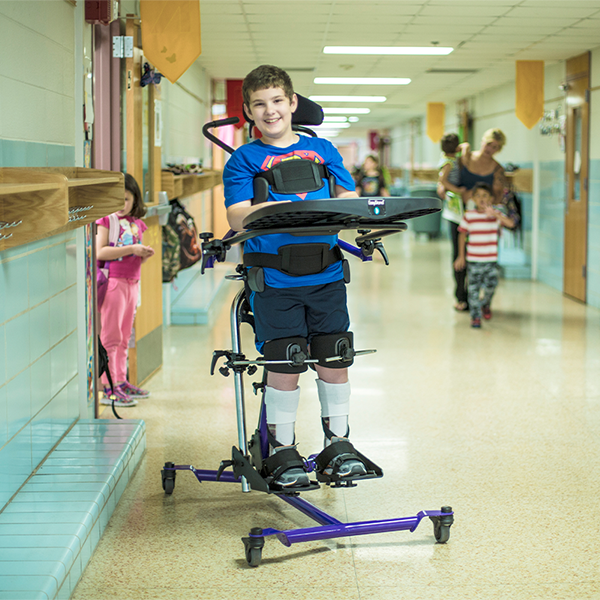Benefits of Standing for Children
- Lewis Stevens
- Case Studies
- 28 Jun 2021
-
289views

Take a read at all the different benefits of standing for children!
The benefits of early intervention standing:
Build overall core strength and head control for improved muscle memory and motor skills. Develop strength and endurance to stand and stetch for longer periods of time. Standing may help build capacity to stand unsupported and take steps with assistance in the future. Keep your child's body healthy as they develop improved digestive health.
Bone Density:
Children who participate in a standing program can help reduce their chance of fractures by building up the density of their bones. Research shows standing for 60 minutes daily or in sessions adding up to an hour, is needed to maintain good bone density and the benefits of improved bone structure strength.




Range of Motion:
Standing greatly helps children to maintain their flexibility and motion as they get older and grow. it is an easy of getting stretching into the users daily routine, with just 46 minutes of standing a day required. The flexibility can have a positive impact on quality of life with wheelchair transfers, bathing and dressing all becoming easier.
Hip Integrity:
As part of a standing program, standing with the hips apart - known as hip abduction - is when the user's legs are moved and supported into an outward position. Research shows that hip abduction of 15° to 30° maintained for 45 minutes a day can help with secondary hip integrity issues such as hip subluxation and hip dislocation.




Clinical Refrences:
[1] Alekna V, Tamulaitiene M, Sinevicius T, Juocevicius A. Spinal Cord. Effect of weight-bearing activities on bone mineral density in spinal cord injured patients during the period of the first two years. 2008 Nov;46(11):727-32.
[2] Damcott et al. Effects of Passive versus dynamic loading interventions on bone health in children who are nonambulatory. Ped Phy Ther. 2013;25:248-255.
[3] Gibson S, Sprod J, Maher C. The use of standing frames for contracture management for nonmobile children with cerebral palsy. Int Journ Rehab Research. 2009, 32:316-323.
[4] Gudjonsdottir B, Stemmons Mercer V. Effects of a dynamic versus a static prone stander on bone mineral density and behavior in four children with severe cerebral palsy. Pediatr phys Ther, vol 14 (1). Spring 2002;38-46.
[5] Hagglund G. et al. Prevention of dislocation of the hip in children with cerebral palsy. 20-year results of a population-based prevention programme. Bone joint J 2014; 96-B:1546-52.
[6] Katz D. et al. “Can using standers increase bone density in non-ambulatory children?” American Acad of Cerebral palsy and Devl med, 2006.
[7] Macias L. The effects of the standing programs with abduction for children with spastic diplegia. Pediatr Phys Ther. 2015;17(1):96.
[8] Macias L, Bagur C., Girabent M, Stuberg W. Standing Programs to Promote Hip Flexibility in Children with Diplegic Cerebral Palsy. Pediatr Phys Ther, 2015; 243-249.
[9] Paleg G, Smith B, Glickman L. Systematic review and evidence-based clinical recommendations for dosing of pediatric supported standing programs. Pediatr Phys Ther. 2013;25:232-247.
[10] TW Pin et al. The effectiveness of passive stretching in children with cerebral palsy. Devl med and child neuro 2006, 48:855-862.
[11] Rivi E., Filippi M, Fornasari E, Mascia M, Ferrari A, Costi S. Effectiveness of standing frame on constipation in children with cerebral palsy: a single subject design. Occup ther Int. 2014, 115-123.
[12] Stuberg W., Considerations related to weight-bearing programs in children with developmental disabilities. Phys Ther 1992;35-50.
[13] Wort UU, Nordmark E, Wagner P, Duppe H, Westbom L. “Fractures in Children with cerebral palsy: a total population study”, Developmental Medicine and Child Neurology. (March) 2013.
